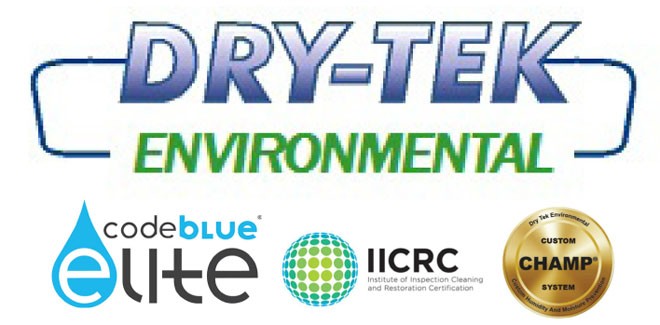Frequently Asked Questions When Addressing Crawl Space Moisture Problems

HOW IS WATER GETTING INTO MY CRAWL SPACE?
Water may enter the crawl space through penetrations in the foundation wall or through a normal foundation wall due to hydrostatic pressure. Moisture may enter the crawl space through open foundation vents and condense on cool surfaces in the crawl space. Water may leak from faulty plumbing or HVAC systems. Moisture may evaporate from the cool soil floor into the relatively warmer crawl space air.
DO I NEED A SUMP PUMP IN MY CRAWL SPACE?
The amount of standing water will determine the need for a sump pump. However, the relatively low cost of a sump pump installation is outweighed by the benefit of preventing or lessening the potential water damage to a crawl space HVAC system or other crawl space mechanical system.
DO I NEED A DEHUMIDIFIER?
Dry-Tek attempts to prevent excessive crawl space humidity and moisture without the use of mechanical or electrical equipment. A dehumidifier may be deemed necessary at the time of initial system installation. However, we may recommend a trial period without a dehumidifier to determine if one is required. Many of our CHAMP® (Crawlspace Humidity And Moisture Prevention) systems function without a dehumidifier. Of course, a system that functions without the need of a dehumidifier, will also function with a dehumidifier.
IS IT NECESSARY TO HAVE PLASTIC ON THE GROUND IN MY CRAWL SPACE?
Yes. A significant amount of the air moisture content in a crawl space is secondary to evaporation of water from the crawl space dirt floor. The floor may appear “dry”, but, the cool and moist dirt will release vapor into the warmer crawl space air, which in turn will condense on other cool surfaces such as wooden frame members.
SHOULD I KEEP THE CRAWL SPACE VENTS OPEN IN THE SUMMER AND CLOSED IN THE WINTER?
“This is the one question I am most commonly asked.” says Austin who is certified in Water Damage Restoration and Applied Microbial Remediation. The crawl space vents should be kept closed throughout the year in the Mid Atlantic and Southeastern regions of the United States. The traditional idea of decreasing the moisture in the crawl space by ventilating the space with outside air through wall vents has not shown to decrease the moisture in the crawl space. In fact, Advanced Energy in Raleigh, NC www.advancedenergy.org has research showing that during warm seasons, the outside air contains more moisture than the crawl space. Therefore, the outside air contributes more water vapor, passing through the vents and into the crawlspace, leaving no potential to dry the crawl space. This humid air entering crawl space vents is responsible for moisture related problems such as condensation, high wood moisture content, mold growth, and wood rot.
IS THE MOLD IN MY CRAWL SPACE UNHEALTHY FOR ME? IS IT BAD FOR MY FAMILY?
Inhaling or touching mold or mold spores may cause adverse health issues in some people. Molds growing in buildings may cause odors, and symptoms such as headaches, irritation of the skin, eyes, nose and throat, as well as, difficulty breathing and allergic reactions. However, each of these symptoms may be caused by conditions and exposures unrelated to mold. Therefore, mold may or may not be the cause of these symptoms.
“The job they did on my crawl space is fantastic. The difference it made was
instantly noticeable. I cannot wait to see how it effects my utility bills.
Austin is very professional and great to work with. You can tell that he is
passionate about his job and is very true to his word. I highly recommend
them for fixing your crawl space.” — Paul S. Bethany Beach, DE
818 Brown Street
Salisbury, MD 21804
410-543-4848 Office


